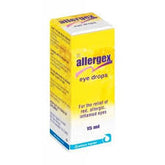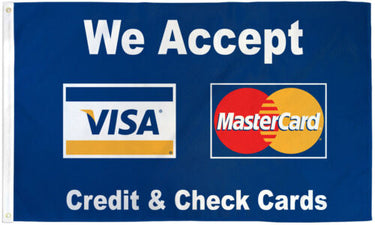Hernia (inguinal)
An inguinal hernia occurs when tissue, such as part of the intestine, protrudes through a weak spot in the abdominal muscles near the groin area. It results in a visible bulge that can be painful, especially when coughing, bending over, or lifting heavy objects. Inguinal hernias are the most common type of hernia and are more prevalent in men than women.
Types
Inguinal hernias are classified into two main types:
-
Indirect Inguinal Hernia:
- Occurs when the hernia sac enters the inguinal canal through the internal inguinal ring.
- Often congenital, resulting from a persistent opening that doesn't close properly after birth.
- More common in males due to the natural pathway of the testicles descending into the scrotum.
-
Direct Inguinal Hernia:
- Occurs when the hernia sac protrudes through a weak point in the abdominal wall in the inguinal triangle.
- Usually develops in adulthood due to weakening muscles with age.
- Less common than indirect inguinal hernias.
Symptoms
The symptoms of an inguinal hernia can vary, but common signs include:
- Visible Bulge: A noticeable lump in the groin or scrotum that becomes more apparent when standing up or straining.
- Pain or Discomfort: Especially when bending over, coughing, or lifting heavy objects.
- Weakness or Pressure: A feeling of heaviness or pulling in the groin area.
- Burning or Aching Sensation: Around the hernia site.
- Swelling: In the scrotum in men.
Causes
Inguinal hernias can develop due to various factors, including:
- Congenital Weakness: A natural weakness in the abdominal wall present at birth.
- Increased Abdominal Pressure: From activities such as heavy lifting, straining during bowel movements or urination, chronic coughing, or obesity.
- Aging: Muscles weaken over time, making hernias more likely to occur.
- Injury or Surgery: Previous abdominal surgeries or injuries can create weak spots in the abdominal wall.
Risk Factors
Several factors can increase the risk of developing an inguinal hernia:
- Gender: Men are more likely to develop inguinal hernias.
- Age: The risk increases with age as muscles weaken.
- Family History: A close relative with an inguinal hernia can increase your risk.
- Chronic Cough: Such as from smoking or lung conditions.
- Chronic Constipation: Leading to straining during bowel movements.
- Previous Hernia: A history of hernias increases the risk of recurrence.
Diagnosis
Diagnosing an inguinal hernia typically involves:
- Physical Examination: A doctor will check for a bulge in the groin area, which may become more prominent when standing, coughing, or straining.
- Medical History: Discussing symptoms, risk factors, and any previous surgeries.
-
Imaging Tests: In some cases, to confirm the diagnosis or evaluate complications:
- Ultrasound: To visualize the hernia.
- CT Scan or MRI: For detailed images of the hernia and surrounding tissues.
Treatment
Treatment options for inguinal hernias depend on the size of the hernia and the severity of symptoms:
-
Watchful Waiting:
- For small, asymptomatic hernias, regular monitoring by a healthcare provider.
-
Surgical Repair:
- Open Hernia Repair (Herniorrhaphy): A single incision is made in the groin to push the protruding tissue back into place and repair the abdominal wall with stitches or a synthetic mesh (herniorrhaphy).
- Laparoscopic Hernia Repair: Minimally invasive surgery with several small incisions, using a camera and instruments to repair the hernia with a mesh. This approach often results in less postoperative pain and faster recovery.
Complications
If left untreated, inguinal hernias can lead to serious complications:
- Incarceration: The hernia becomes trapped and cannot be pushed back into the abdomen, causing pain and possible obstruction of the intestine.
- Strangulation: Blood supply to the trapped tissue is cut off, leading to tissue death and potentially life-threatening conditions requiring emergency surgery.
When to See a Doctor
Seek medical attention if you experience symptoms of an inguinal hernia, especially if:
- The bulge becomes painful, firm, or discolored.
- You have nausea, vomiting, or fever.
- You cannot push the hernia back into the abdomen.
- You experience sudden, severe pain.
Prevention
While not all inguinal hernias can be prevented, some measures may reduce the risk:
- Maintain a Healthy Weight: Reduces abdominal pressure.
- Avoid Heavy Lifting: Use proper lifting techniques and seek help when needed.
- Treat Chronic Cough: Manage underlying conditions contributing to coughing.
- Prevent Constipation: Eat a high-fiber diet and stay hydrated.
- Strengthen Abdominal Muscles: Regular exercise to maintain muscle tone and support the abdominal wall.
Conclusion
Inguinal hernias are a common condition that can cause discomfort and lead to serious complications if left untreated. Early diagnosis and appropriate treatment, whether through lifestyle modifications or surgical repair, can effectively manage symptoms and prevent recurrence. Regular monitoring and proactive measures can help individuals with inguinal hernias maintain a healthy and active lifestyle.
- Complication of Hernia (inguinal)
- Diagnosis of Hernia (inguinal)
- Hernia (inguinal)
- Hernia (inguinal) myths
- How is Hernia (inguinal) treated?
- Medicine for Hernia (inguinal)
- Remedies for Hernia (inguinal)
- Support for Hernia (inguinal)
- Symptoms associated with Hernia (inguinal)
- The best British Online Pharmacy
- Top 10 UK Pharmacies
- Treatment for Hernia (inguinal)
- What causes Hernia (inguinal)
- What is Hernia (inguinal)
- Where can I buy medicine for Hernia (inguinal) in the UK
- ZimSeller Pharmacy



















